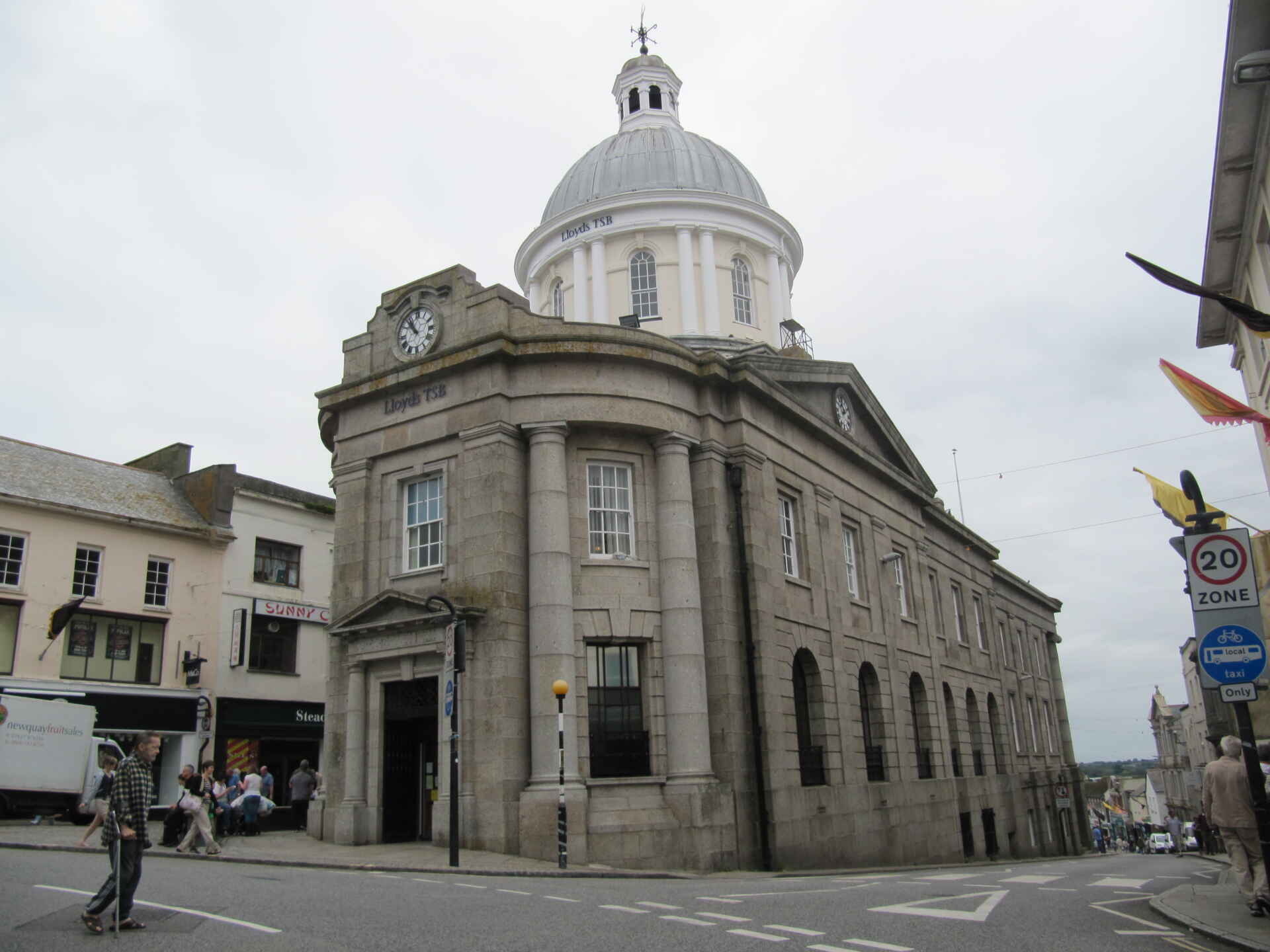The skyline of Penzance is dominated by the elegant leaded dome of the town’s Market House. This building, standing at the highest point of Market Jew Street, draws your eye along the main street and seems to lift your gaze above the daily hubbub.
Grand and imposing it was opened on the day of Queen Victoria’s Coronation in 1838 but this was not the first market house in Penzance. There was once a much earlier structure dating from about 1615 which was described as a “long oblong building” surrounded with ramshackle lean-to buildings. The cellar of this ancient structure also served as the town prison.
But by about 1835 it had been decided that the building was no longer “sufficient for the trade of the town” and a competition was held to design its replacement. Mr. H. J. Whitling, a London architect, was announced the winner but the celebrations quickly soured when the town’s Corporation realised that they couldn’t actually afford to build his design. They then swiftly awarded the prize to William Harris of Bristol instead. Unfortunately Whitling sued for damages and was awarded £300 (about £20,000 in today’s money).
Despite the mix-up the foundation stone for the handsome, new granite building was laid in July 1836 and the Market House and Guildhall was completed less than two years later. With its elegant portico, graceful dome, octagonal lantern and columns it was said to have been built to “direct its users’ attention away from the vulgarity of the streets and the uninspired and often depressingly ugly uniformity of the town”.
The new building quickly attracted all manner of tradesmen.
It is said that by 1839 some 30 to 40 stalls crowded into the area making the streets too narrow for horse and cart to pass. On one side were the butchers, another was occupied by shoemakers and leather merchants, on the south-east the women sold butter and eggs and the south side was filled with stalls selling fish, fresh and salted, and jars of pilchard oil for lamps. At the eastern end of the site a pig market was held every Thursday and this was also where the town’s stocks were placed.
As well as a market the building was used as the Corn Exchange and by the town council. At one stage Penzance Grammar School also occupied some of the rooms as did the Penwith Natural History Society.
It was mere metres from the bustle of the Market House that the scientist Humphry Davy conducted some of his earliest experiments so it seems only fitting that his statue was added in 1872.
By 1925 however the Market House was occupied by Lloyds Bank who eventually bought the site from the Borough of Penzance in 1965 for £35,000. Sadly however this iconic building has been allowed to deteriorate in recent years and in 2019 it was placed on Historic England’s At Risk Register. At present it is hoped that government funding will help to pay for the necessary repairs and return Penzance’s Market House to its former glory.
